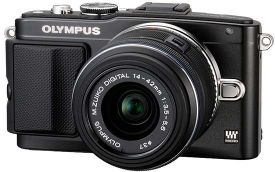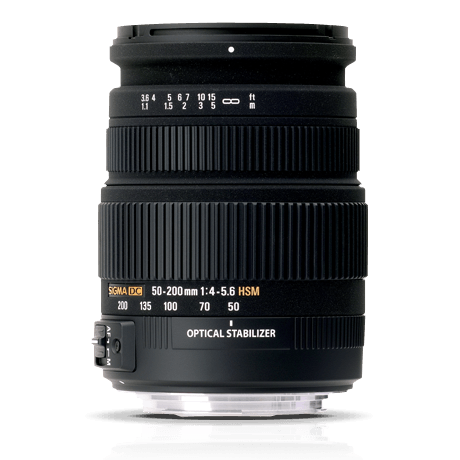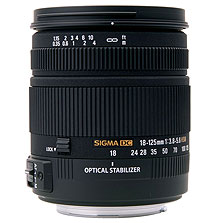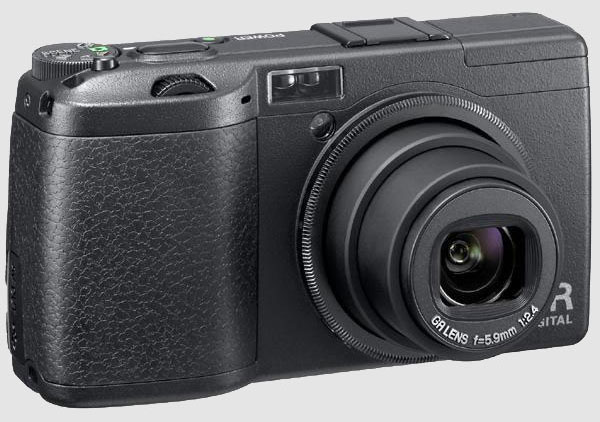EVF or OVF?
22nd December 2019In photography, some developments are passing fads while others bring longer lasting changes. In their own way, special effects filters and high dynamic range techniques cause their share of excitement before that passed and their usage became more sensible. In fact, the same might be said for most forms of image processing because tastefulness eventually gets things in order. Equally, there are others that mark bigger shifts.
The biggest example of the latter is the move away from film photography to digital image capture. There still are film photographers but they largely depend on older cameras since very few are made any more. My own transition came later than others but I hardly use film any more and a lack of replacement parts for cameras that are more than fifteen years old only helps to keep things that way. Another truth is that digital photography makes me look at my images more critically and that helps for some continued improvement.
Also, mobile phone cameras have become so capable that the compact camera market has shrunk dramatically. In fact, I gave away my Canon PowerShot G11 earlier this year because there was little justification in hanging onto it. After all, it dated back to 2010 and a phone would do now what it once did though the G11 did more for me than I might have expected. Until 2017, my only photos of Swedish locations were made with that camera. If I ever was emotional at its departure and I doubt that I was, that is not felt now.
If you read photography magazines, you get the sense that mirrorless cameras have captured a lot of the limelight and that especially is the case with the introduction of full frame models. Some writers even are writing off the chances of SLR’s remaining in production though available model ranges remain extensive in spite of the new interlopers. Whatever about the departure of film, the possible loss of SLR’s with their bright optical viewfinders (OVF’s) does make me a little emotional since they were the cameras that so many like me aspired to owning during my younger years and the type has served me well over the decades.

Even so, I too have used mirrorless cameras and an Olympus PEN E-PL5 came into my possession in 2013. However, I found that using the screen on the back of a camera was not to my liking and the quality of mobile phone cameras is such that I no longer need any added portability. However, it needs to be remembered that using a Tamron 14 to 150 mm zoom lens with the body cannot have helped either. Wishing to sample a counterpart with an electronic view finder, I replaced it with an Olympus OM-D E-M10 Mark III earlier this year and have been getting on fine with that.
The body certainly is a compact one but the handling is very like an SLR and I have turned off the automatic switching between viewfinder and screen since I found it distracting; manually switching between the two is my preference. As it happens, using the EVF took a little acclimatisation but being able to add a spirit level overlay proved to as useful as it was instructive. The resulting images may be strong in the green and blue ends of the visible spectrum but that suits a user that is partial to both colours anyway. It also helps that the 16.1 megapixel sensor creates compact images that are quick to upload to a backup service. There have been no issues working with my Tamron lens and keeping that was a deciding factor in my remaining with Olympus in spite of a shutter failure with the older camera. That was fixed efficiently and at a reasonable cost too.
As good as the new Olympus has been, it has not displaced my existing Canon EOS 5D Mark II and Pentax K5 II SLR’s. The frame size is much smaller anyway and January saw me acquire a new Sigma 24 to 105 mm zoom lens for the former after an older lens developed an irreparable fault. The new lens is working as expected and the sharpness of any resulting images is impressive. However, the full frame combination is weighty even if I do use it handheld so that means that the Pentax remains my choice for overseas trips. There also is an added brightness in the viewfinders of both cameras that I appreciate so the OM-D complements the others rather than replacing them.
While I can get on with EVF’s if SLR’s ever get totally superseded, I am planning to stick mainly with SLR’s for now. Interestingly, Canon has launched a new enthusiast model so there must be some continuing interest in them. Also, it seems that Canon foresees a hybrid approach where live viewing using the screen on the back of the camera may add faster autofocus or other kinds of functionality while the OVF allows more traditional working. That of itself makes me wonder if we might see cameras that can switch between EVF and OVF modes within the same viewfinder. The thought may be as far fetched as it is intriguing yet there may be other possibilities that have not been foreseen. One thing is clear though: we are in an age of accelerating change.
A Look at a Compact System Camera
4th September 2013During August, I acquired an Olympus Pen E-PL5 and it is an item to which I still am becoming accustomed and it looks as if that is set to continue. The main reason that it appealed to me was the idea of having a camera with much of the functionality of an SLR but with many of the dimensions of a compact camera. In that way, it was a step up from my Canon PowerShot G11 without carrying around something that was too bulky.

Before I settled on the E-PL5, I had been looking at Canon’s EOS M and got to hear about its sluggish autofocus. That it had no mode dial on its top plate was another consideration though it does pack in an APS-C sized sensor (with Canon’s tendency to overexpose finding a little favour with me too on inspection of images from an well aged Canon EOS 10D) at a not so unappealing price of around £399. A sighting of a group of it and similar cameras in Practical Photography was enough to land that particular issue into my possession and they liked the similarly priced Olympus Pen E-PM2 more than the Canon. Though it was a Panasonic that won top honours in that test, I was intrigued enough by the Olympus option that I had a further look. Unlike the E-PM2 and the EOS M, the E-PL5 does have a mode dial on its top plate and an extra grip so that got my vote even it meant paying a little extra for it. There was a time when Olympus Pen models attracted my attention before now due to sale prices but this investment goes beyond that opportunism.
The E-PL5 comes in three colours: black, silver and white. Though I have a tendency to go for black when buying cameras, it was the silver option that took my fancy this time around for the sake of a spot of variety. The body itself is a very compact affair so it is the lens that takes up the most of the bulk. The standard 14-42 mm zoom ensures that this is not a camera for a shirt pocket and I got a black Lowepro Apex 100 AW case for it; the case fits snugly around the camera, so much so that I was left wondering if I should have gone for a bigger one but it’s been working out fine anyway. The other accessory that I added was a 37 mm Hoya HMC UV filter so that the lens doesn’t get too knocked about while I have the camera with me on an outing of one sort or another, especially when its plastic construction protrudes a lot further than I was expecting and doesn’t retract fully into its housing like some Sigma lenses that I use.
When I first gave the camera a test run, I had to work out how best to hold it. After all, the powered zoom and autofocus on my Canon PowerShot G11 made that camera more intuitive to hold and it has been similar for any SLR that I have used. Having to work a zoom lens while holding a dinky body was fiddly at first until I worked out how to use my right thumb to keep the body steady (the thumb grip on the back of the camera is curved to hold a thumb in a vertical position) while the left hand adjusted the lens freely. Having an electronic viewfinder instead of using the screen would have made life a little easier but they are not cheap and I already had spent enough money.
The next task after working out how to hold the camera was to acclimatise myself to the exposure characteristics of the camera. In my experience so far, it appears to err on the side of overexposure. Because I had set it to store images as raw (ORF) files, this could be sorted later but I prefer to have a greater sense of control while at the photo capture stage. Until now, I have not found a spot or partial metering button like what I would have on an SLR or my G11. That has meant either using exposure compensation to go along with my preferred choice of aperture priority mode or go with fully manual exposure. Other modes are available and they should be familiar to any SLR user (shutter priority, program, automatic, etc.). Currently, I am using bracketing while finding my feet after setting the ISO setting to 400, increasing the brightness of the screen and adding histograms to the playback views. With my hold on the camera growing more secure, using the dial to change exposure settings such as aperture (f/16 remains a favourite of mine in spite what others may think given the size of a micro four thirds sensor) and compensation while keeping the scene exactly the same to test out what the response to any changes might be.
While I still am finding my feet, I am seeing some pleasing results so far that encourage me to keep going; some remind me of my Pentax K10D. The E-PL5 certainly is slower to use than the G11 but that often can be a good thing when it comes to photography. That it forces a little relaxation in this often hectic world is another advantage. The G11 is having a quieter time at the moment and any episodes of sunshine offer useful opportunities for further experimentation and acclimatisation too. So far, my entry in the world of compact system cameras has revealed them to be of a very different form to those of compact fixed lens cameras or SLR’s. Neither truly get replaced and another type of camera has emerged.
All that was needed was a trip to a local shop
5th March 2011In the end, I did take the plunge and acquired a Sigma 50-200 mm f4-5.6 DC OS HSM lens to fit my ever faithful Pentax K10D. After surveying a few online retailers, I plumped for Park Cameras where the total cost, including delivery, came to something to around £125. This was around £50 less than what others were quoting for the same lens with delivery costs yet to be added. Though the price was good at Park Cameras, I was wondering still about how they could manage to do that sort of deal when others don’t. Interestingly, it appears that the original price of the lens was around £300 but that may have been at launch and prices do seem to tumble after that point in the life of many products of an electrical or electronic nature.
 Unlike the last lens that I bought from them around two years ago, delivery of this item was a prompt affair with dispatch coming the day after my order and delivery on the morning after that. All in all, that’s the kind of service that I like to get. On opening the box, I was surprised to find that the lens came with a hood but without a cap. However, that was dislodged slightly from my mind when I remembered that I neglected to order a UV or skylight filter to screw into the 55 mm front of it. In the event, it was the lack of a lens cap needed sorting more than the lack of a filter. The result was that I popped in the local branch of Wildings where I found the requisite lens cap for £3.99 and asked about a filter while I was at it. Much to my satisfaction, there was a UV filter that matched my needs in stock though it was that cheap at £18.99 and was made by a company of which I hadn’t heard before, Massa. This was another example of good service when the shop attendant juggled two customers, a gentleman looking at buying a DSLR and myself. While I would not have wanted to disturb another sales interaction, I suppose that my wanting to complete a relatively quick purchase was what got me the attention while the other customer was left to look over a camera, something that I am sure he would have wanted to do anyway. After all, who wouldn’t?
Unlike the last lens that I bought from them around two years ago, delivery of this item was a prompt affair with dispatch coming the day after my order and delivery on the morning after that. All in all, that’s the kind of service that I like to get. On opening the box, I was surprised to find that the lens came with a hood but without a cap. However, that was dislodged slightly from my mind when I remembered that I neglected to order a UV or skylight filter to screw into the 55 mm front of it. In the event, it was the lack of a lens cap needed sorting more than the lack of a filter. The result was that I popped in the local branch of Wildings where I found the requisite lens cap for £3.99 and asked about a filter while I was at it. Much to my satisfaction, there was a UV filter that matched my needs in stock though it was that cheap at £18.99 and was made by a company of which I hadn’t heard before, Massa. This was another example of good service when the shop attendant juggled two customers, a gentleman looking at buying a DSLR and myself. While I would not have wanted to disturb another sales interaction, I suppose that my wanting to complete a relatively quick purchase was what got me the attention while the other customer was left to look over a camera, something that I am sure he would have wanted to do anyway. After all, who wouldn’t?
With the extras acquired, I attached them to the front of the lens and carried out a short test (with the cap removed, of course). When it was pointed at an easy subject, the autofocus worked quickly and quietly. A misty hillside had the lens hunting so much that turning to manual focussing was needed a few times to work around something understandable. Like the 18-125 mm Sigma lens that I already had, the manual focussing ring is generously proportioned with a hyperfocal scale on it though some might think the action a little loose. In my experience though, it seems no worse than the 18-125 mm so I can live with it. Both lenses share something else in common in the form of the zoom lens having a stiffer action than the focus ring. However, the zoom lock of the 18-125 mm is replaced by an OS (Optical Stabilisation) one on the 50-200 mm and the latter has no macro facility either, another feature of the shorter lens though it remains one that I cannot ever remember using. In summary, first impressions are good but I plan to continue appraising it. Maybe an outing somewhere tomorrow might offer a good opportunity for using it a little more to get more of a feeling for its performance.
Sometimes, a firmware update is in order
28th February 2011After a recent trip to Oxford, I have started to mull over adding a longer lens (could make more distant architectural detail photos a possibility) to complement my trusty Sigma 18-125mm f/3.8-5.6 DC HSM zoom lens that now is entering approaching its third year in my hands. While I have made no decision about the acquisition of another lens, there are some tempting bargains out there, it seems. However, the real draw on my attention is the lack of autofocus with the aforementioned Sigma and I now find it hard to believe that I was blaming the manufacturer for no keeping up with Pentax when it really was the other way around. A bit of poking around on the web revealed that all that I needed to do was download a firmware update from the Pentax website. While being slowed down by the lack of autofocus cannot have done bad things for my photography, I still wonder at why I didn’t try updating the camera for as long as I have.
In the file for updating my K10D, there was a README file containing the instructions for carrying out the update with the included binary file that was set to take the camera from version 1.00 to 1.30 (hold down the Menu button while starting the camera to see what you have). In summary, both files were copied onto an SD card that was inserted into the camera and it turned off. The next step was to power up the camera with the menu button held down to start the update. To stop erroneous updates, there is an “Are you sure?” style Yes/No menu popped up before anything else happens. Selecting Yes sets things into motion and you have to wait until the word “COMPLETE” appears in the bottom left corner before turning the camera and removing the card. Now that I think of it, I should have checked the battery before doing anything because the consequences of losing power in the middle of what I was doing would have been annoying, especially with my liking the photographic results produced by the camera.
Risk taking aside, the process was worth its while with HSM now working as it should have done all this time. It seems quiet and responsive too from my limited tests to date. Even better, the autofocus doesn’t hunt anywhere near as much as the 18-55 mm Pentax kit lens that came with the camera. The next decision is whether to stick with my manual focussing ways or lapse into trusting autofocus from now on though my better reason is to stick with the slower approach unless the subjects are fast. Now that I think of it, train and bus photos for my transport website have become a whole lot easier as have any wildlife photos that I care to capture. Speaking of the latter brings me back to that telephoto quandary that I mentioned at the beginning. Well, there’s a tempting Sigma 50-200 mm that has caught my eye…
No autofocus?
25th March 2009
Recently, I recently treated myself to a Sigma 18-125 mm f/3.8-5.6 DC HSM zoom lens for my Pentax K10D. There was a wait for the item to appear and I then found that the lens’ autofocus facility wasn’t compatible with the body. Standard wisdom would have it that I sent the thing back and ask for a replacement or a refund.
Perhaps inexplicably, I did neither. In fact, I came to the conclusion, that since I make photos of landscapes anyway, that been slowed down by the lack of autofocus was no bad thing except perhaps when appealing light makes fleeting appearances. It is true to say that a used Pentax manual focus lens would have been cheaper but I did what I did.
The camera’s autofocus indicator still works and the 18-55 mm zoom that came with the camera wasn’t impressive anyway, so taking matters into my own hands was something that happened a lot. Now, I have better quality glass in front of the sensor and with a metal mount and longer range too. The lens comes with a petal hood too, though I keep that for when I really need it rather than keeping it on the lens and stopping myself focussing the thing.
Speaking of zooming and focussing, the controls work well and smoothly without being at all loose. The AF setting gets used to lock the focus and the zoom can be locked at the wide end so that the lens doesn’t get into the habit of zooming under the influence of gravity, not a bad thing. For future lens purchases, I might be more inclined to ask about compatibility next time around (I may have been spoiled by the Canons that I used to use) but I remain content for now.
All in all, it feels like a quality item and it’s a pity that Pentax saw fit to make the changes that they made, or that Sigma didn’t seem to have kept up with them. Saying that, my photographic subjects usually don’t run off so being slowed down is no bad thing at all, especially if it makes me create better photos.
Camera tales
20th January 2007Anyone who has ever been on HennessyBlog will know that I enjoy walking in the countryside and that I always have a camera with me when I do. Like many digital SLR owners, I am beginning to see the tell-tale spots in my photos that are caused by a dirty sensor. And it isn’t that I am continually changing lenses either: I rarely remove the Sigma 18-50 mm DC zoom lens that I use with the camera. Rather than trusting myself with the cleaning (I have had a go already without much success), I am giving serious consideration to letting the professionals take care of my Canon EOS 10D, my only digital camera. I have already been quoted something of the order of £35 by a Canon service centre not far from me and am seriously considering taking them up on the offer.
Of course, sending it away to them means that I will have to forego the ability to include photos with posts on HennessyBlog describing my walks in the kind of timescale to which I have become accustomed; of course, this is where digital really scores. I will still have a camera with me as film remains my mainstay, even in this digital age. The camera in question is another Canon, an EOS 30 that I acquired used from Ffordes Photographic. While taking a recent peek at their website, I have just spied a used EOS 1V going for £399, a song for what remains Canon’s top of the range film SLR. Yes, I am tempted but I must stay real. In fact, I did not pay full price for my EOS 10D. That was part of the run-out stock that 7dayshop.com were selling off at next to half of the EOS 10D’s original asking price in the wake of its being superseded by the EOS 20D (itself since replaced by the EOS 30D: digital is a fast-moving world).
Sending a camera away for attention is not new to me as I also acquired a used Minolta X-700 manual focus SLR, again obtained from Ffordes, and that needed a spot of maintenance after a year in my possession. There was a problem with the shutter that cost me £75 to get Minolta to fix. Now that Minolta as a camera maker is no more, I was wondering who would attend to it in the future. That question was answered by a recent look on the web: in the UK it is JP Service Solutions, a division of Johnson’s Phototopia. Konica Minolta retain this information on their website. Konica Minolta’s failure to capitalise effectively on the digital revolution in its early days, particularly in the SLR area where they gifted their competitors a massive head start, cost them their future in the photographic business and now Sony continues the mantle, a sad end to one of camera manufacturing’s great innovators.
Returning to my digital-less dilemma, I suppose that I could get another digital for backup duty; I have to admit that a DSLR is a bulky contraption to be carrying in airline luggage. The camera that has made it onto my wish list is Ricoh’s GR Digital, a highly regarded offering that follows in the great tradition of its film forbears, the GR 1 and GR 21. Given that my first 35 mm camera was a Ricoh, and I have it still, this would be a case of returning to my roots. Of course, having it on a wish list is very different from having it on the to-do list and finances will certainly dictate if the purchase is made, though a finance deal offered by Warehouse Express does make it more accessible. Maybe some day…
